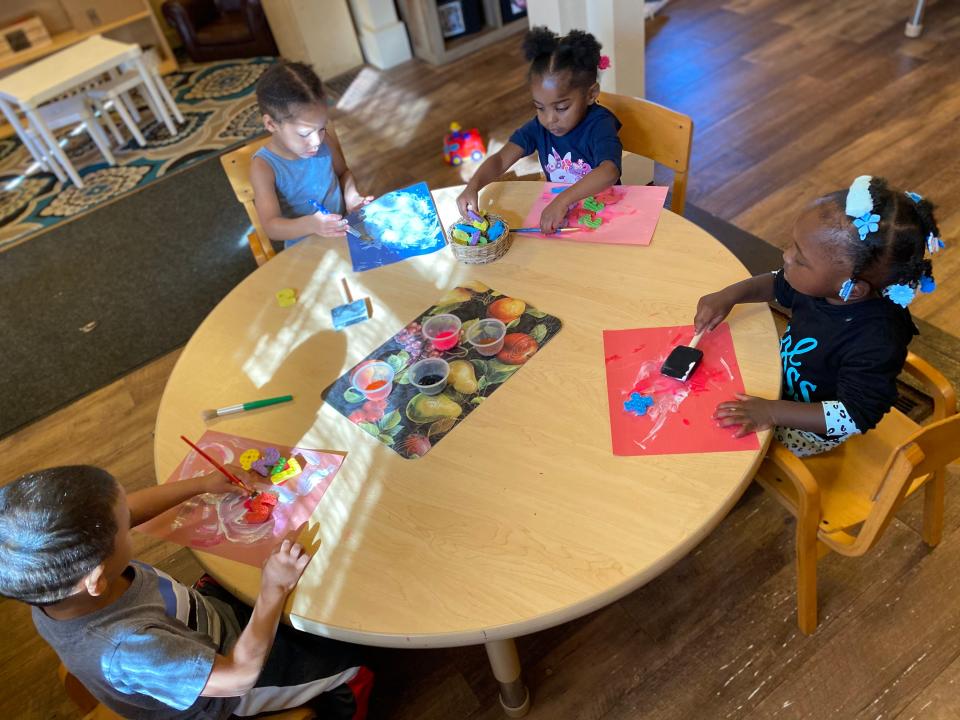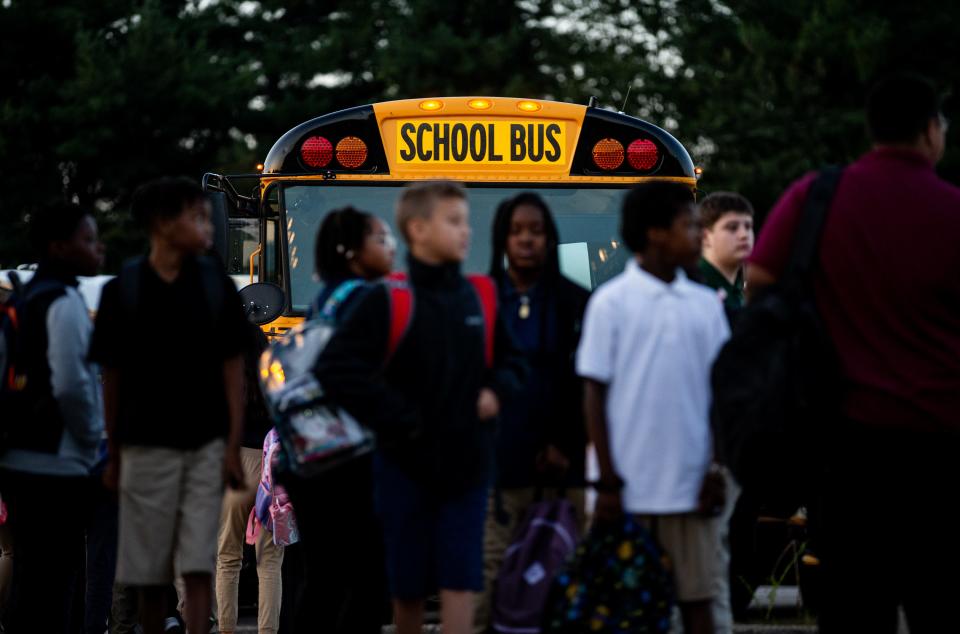Kentucky's proposed 2-year state budget gets some things right but fumbles on child care
As is the case in every proposed budget, there is much to celebrate and also issues of deep concern when it comes to the Kentucky House 2024 State Budget proposal.
This budget certainly places a priority on infrastructure issues like bridges, roads and water supply, and who can argue with any of those commitments? However, this budget proposal ignores the most important infrastructure in the commonwealth – child care.
Kentucky budget fumbles on child care
While the Child Care Assistance Program reimbursement rate for centers is maintained in this proposal, there is no CCAP income exclusion for child care providers to receive care, no funding for the successful Early Childhood Education Scholarship Program, and no allocation for start-up grants for family child care homes. The biggest disappointment is that the proposed budget would reduce CCAP eligibility of families from 85% of the state median income to the pre-pandemic rate of 160% of the Federal Poverty Level, potentially making up to 10,000-plus current families ineligible. Without quality, affordable and accessible child care programs, parents cannot maintain stable employment and children can end up in the care of unsafe adults – a reality our lawmakers cannot realistically want for their constituents.

Deep investments in services and supports for Kentucky children
The fumble on child care is confusing because, in fact, there is much in the House budget around kids that merits commendation and cheers. First and foremost, the House put the money where their mouth is for juvenile justice. This proposal sees a deep investment in services and supports that can address the root causes of delinquent behavior – from expanded investments in alternatives to detention, to evidence-based programming and physical and mental health services in juvenile detention facilities. With these investments Kentucky can do more to keep kids out of detention, ensure that more of their needs are being met while they’re involved with the juvenile justice system, and provide them with the tangible services needed to stay on the right track.
I am a foster kid with a college degree. That shouldn't be rare, but it is. Here's why.
Investments in areas for kids worth celebrating in the state House’s proposed budget
When it comes to K-12 education, the sustained funding for school-based mental health services reiterates the House’s understanding that while students’ reading, writing and arithmetic outcomes are priority, so are their mental and behavioral health needs. The budget’s elements such as an investment in the student-teacher pipeline by allocating funds for the Student Teacher Stipend Program and enacting the Teacher Recruitment Student Loan Forgiveness Pilot Program underscore the House’s focus on addressing the workforce fractures in our public schools.
There’s also reason to celebrate when it comes to families’ food security. The proposal includes an investment in a permanent Summer EBT program, in which an estimated 600,000 Kentucky kids will be eligible for a $40 per month grocery benefit during the summertime. We also noted a first-time increase to the Farms to Food Banks budget, which allows food banks to purchase fresh produce from Kentucky’s farmers.
For some of our most vulnerable young people, we are glad to see an increase in slots for programs serving children with disabilities, such as the Michelle P. and Supports for Community Living waiver programs, as well as initiation of a new waiver for children ages 0-21 with severe emotional disabilities, autism spectrum disorder, and intellectual disabilities.
For child welfare – an arena in which common ground should abound – the House proposal offers several investments worth celebration. First, there’s funding included for the hiring of 100 new social workers over the biennium. Second, there’s a significant increase in the proposal to support foster care placements. And finally – and particularly most noteworthy – is a focus on our kinship and fictive kin caregivers stepping up to care for children. That includes a significant rate increase for the Relative Caregiver placement and sustained investment is the critically important one-time relative placement support benefit.
As we’ve shared previously, increased transportation funding for schools may not be headlining grabbing but it can have a significant impact for families across the Commonwealth – so, while it is still underfunded, we are glad to see the slight increased commitment in the House budget proposal.

Additional areas of concern in Kentucky's House budget proposal
With rising housing costs, slowed construction and natural disasters making it increasingly difficult for families to find and afford safe places to live, now is the time for a substantial investment in the Affordable Housing Trust Fund – but, there was yet again no allocation in the trust fund in this biennial budget proposal.
This proposal includes cuts to the critically important HANDS program, which is a program proven to increase adequate prenatal care and lower rates of preterm birth and low birth weight.
Disappointingly, there is not a Medicaid reimbursement rate increase included in this budget proposal for dental providers, though legislators have heard countless testimonies of need to improve oral health and overall health outcomes of Kentuckians and to keep dental offices open.
Kentucky’s concerningly high rate of youth who are vaping should galvanize leaders to boost funding for tobacco use prevention and cessation programming, yet this proposal instead includes a slight decrease in that funding.

There's no picket line here. Kentucky teachers are protesting low wages by quitting.
Kentucky budget proposal positives, negatives and then a couple areas of question marks.
The increase in SEEK funding – Kentucky’s per-pupil funding formula – is important for student learning, but questions remain how to ensure a focus on SEEK and much-needed teacher raises. There can be a nuanced balance of local autonomy and a firm focus on educator compensation.
Kentucky has seen a downward trajectory around child poverty. Along with this budget, we need the General Assembly to act on tax opportunities that elevate family economic well-being. That could mean a state Earned Income Tax Credit; it could mean a dependent child tax credit. Those measures – and other like-minded measures – have been championed in a cohesive manner in Washington from Ronald Reagan and Mitch McConnell to Barack Obama and Joe Biden over decades. On that score, Frankfort needs to emulate D.C.
As the General Assembly advances the state budget proposal through the legislatives process, we are counting on the House and Senate to undergird the many positives of this budget and to address those gaps. The Governor and General Assembly can find common ground on the needs of kids and families and craft a final biennial budget that supports the vision of making Kentucky the best place to be young.

Terry Brooks is the executive director at Kentucky Youth Advocates. Learn more at kyyouth.org.
This article originally appeared on Louisville Courier Journal: State's proposed budget has much to celebrate but punts on child care

